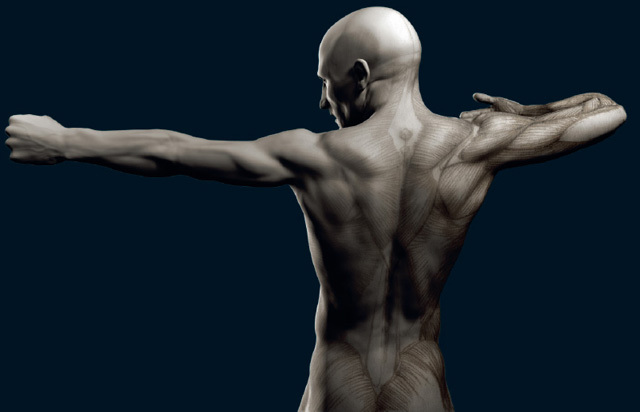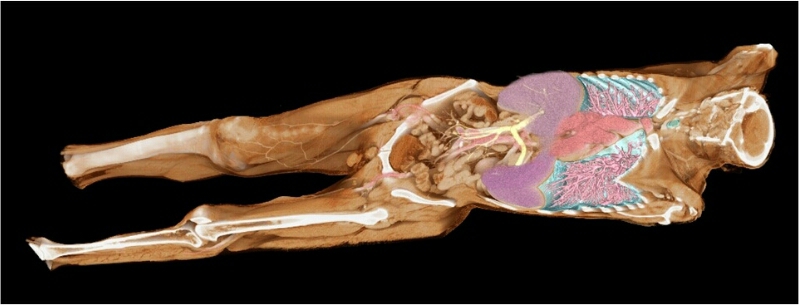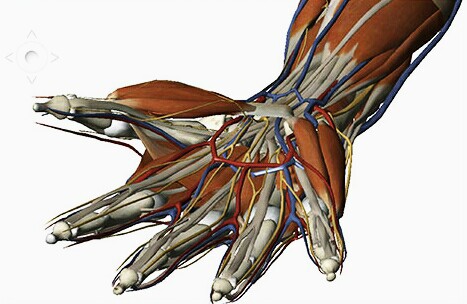High-precision active controlled copy of the human body. The concept of prototyping an artificial mechanostat system

“ Man, as a subject of knowledge, is the key to the whole science of nature ”
Teyar De Chardin
“ A fresh wind always blows on the pass ”
Folk wisdom
" I move to where the puck will fly, not to where it is now ... "
Wayne Gretzky
Part one. Descriptive
Athletic build, fast, precise movements capture the view, beautiful and strong hands easily manipulate surgical instruments - this is how we see the test tests of the human body model, the robot avatar, created by new technologies from a variety of modern polymeric materials. Life in the body of an artificial athlete inhales the energy of graphene batteries, his nerves are optically active metamaterials, thought is highly coherent radiation, his brain is a neural network of optical processors ...
Lyrical beginning
And, nevertheless, this fantastic picture becomes reality. At present, technologies for reproducing ultra-small objects with great accuracy have been created, polymer materials with specified mechanical and physical properties have been invented and obtained, contractility and conductivity effects, inverse light refraction, piezo-effects and high conductivity effects have been achieved. Biomechanical developments have reached the utmost accuracy, an exhaustive mathematical apparatus of motion has been described, and precise man-machine interfaces are being actively created. In the hands of scientists, there is a wonderful clue in the form of wildlife-created jewelry-precise engineering solutions and architectural forms that provide free and subtle movements, speech, hearing, blood circulation, breathing, and so on.
')
Physical continuation
Behind the lyrical beginning are the following scientific achievements:
- The most thoroughly studied anatomy and physiology of living systems.
- Precisely studied biomechanics and methods of its modeling, presented in the form of parametric three-dimensional models of the body of humans and animals in statics and dynamics.
- Mathematical apparatus, describing the multi-level structure and function of the living body, using matrix methods of representation and analysis.
- Ability to create high-precision copies of three-dimensional objects with dimensions of the order of tens of nanometers using various printing methods.
- Many created polymers suitable for three-dimensional printing (including optically active, reducing, ferroelectric, metamaterials and the notorious graphene, and so on).
- Achievements of quantum optics in modeling the processes of transmission and processing of information implemented in biological objects.
- Advances in the creation of neural interfaces, organic excitable structures and even a biological source of highly coherent radiation.

Physics and biophysics, mathematics and genetics, biology, optics and materials science, chemistry, cybernetics and anthropology: the evolution of scientific thought is rapidly advancing and now provides the opportunity to develop an artifactual sensory-motor system - a bionic robot, avatar, a high-precision controlled copy of the human body.
“Why is this needed?”
- you ask. The first thing that comes to mind is a human understudy in difficult and dangerous working conditions. Having a touch interface, biologically close to a person, such a robot will be needed where exactly a person is needed, with its precise hands, subtle movements, eyesight and hearing, where a person can lose health and life. Diving, underground and high-altitude work, extinguishing fires - obvious activities that require a double avatar.
A police robot, managed by an operating officer, is a very obvious alternative to a dangerous service. Actions assault landing and reconnaissance units, managed by experienced operators, will be much more efficient without the risk of losing a person's life.
One qualified surgeon-operator with the help of several robot avatars having movements and feelings of a person will be able to provide very efficiently the provision of assistance in remote and hard-to-reach areas of our planet. Flying in space, after all, can be successfully duplicated by such robots.
The second thing that comes to mind is the use of a variety of technologies used on the basis of creating the concept of prototyping a system of support and movement organs. Let us call it an artificial mechanostat — a system that performs the function of a hierarchically organized, controlled sensorimotor analyzer, which is realized in the form of a dynamic support, motion, and protection. We quite loosely use this term (for the time being), since the theory of mechanostat in biological systems with the accumulation of data is increasingly losing its viability.

So, technology:
1. The study of the dynamics of the movement of a living object, taking into account the preservation and reproduction of all its anatomical structures, requires an accurate selection of diagnostic methods. These methods, being selected and (or) developed, will become a very powerful diagnostic and prognostic tool in the hands of doctors. Today, the assessment of the mutual mobility of organs and tissues in motion differs in not high resolution on tomographs with an open flexible coil available to us (special scanners with an open vertical aperture are not yet available, the scan results have high quality indicators) or a narrow locus of research (ultrasonography) with average resolution and not completely clear limits of measurement. Dual-plane radiography provides accurate results for measuring complex bone trajectories, but does not provide images of displaced soft tissue.
One can speak about macro photography of movements of body segments only in conditions of skin integrity, that is, shooting of active movements is possible only on the surface layer of a living person. The mobility of the tissue of the dissected tissue block of the corpse will not give accurate real movements. In general, we need a reliable and very necessary in diagnostics kinesiographic method of visualization of the most subtle interrelations of all structures of moving segments, and, as you see, it is absent.
2. The resulting complex image is formatted into a parametric CAD model. Modern design systems allow you to simulate the features of movement in segments, evaluate their optimality and create modified segments, models of bionic prostheses or endoprostheses of joints that have individually optimized full-fledged artificial capsule-ligament apparatus. The service life and the quality of operation of the reconstructed prosthesis should obviously increase quite significantly. Looking a little further into the future, applying active polymers and adding a complex neural interface, you can get a bionic part of the body that is hardly different from its own born feelings and possibilities. A significant measure of the individualization of bionic prostheses will undoubtedly become the basis for a long-lasting and lasting effect of treating a number of diseases, injuries and their consequences.
3. Created mobile polymeric tissue blocks with a high degree of anatomical identity can be used as educational tools for practicing skills of high complexity and responsibility in the modern minimally invasive surgery section. Existing training complexes are either too formal and create a simplified picture of his actions for the surgeon, or are very expensive in terms of price and maintenance and also do not differ for the better as they acquire kinesthetic skills, or these are tissue blocks of the corpse that preserve the risk of infection of the surgeon and requiring complex preparation, storage and weight of documentation.
Arthroscopy, endovideosurgery of many areas of the body, including the brain, multistage complex surgical interventions - the skills of modern areas of surgery can be reliably grafted in a relatively short time. Of course, it is possible to model different pathologies, including working out the complex upcoming intervention in a very unusual patient with the help of regular rather than formal training tools. At present, we are developing a technology for creating training complexes and training methods for surgeons; In our opinion, such an approach will allow the surgeon to form stable and reliable kinesthetic skills on artificial tissue blocks that have a high degree of anatomical conformity.

The use of biomechanical principles in the creation of mobile joints allows us to solve a number of technical problems in mechanics. For example, a multi-link suspension at one time was a serious step forward in the automotive industry. Human wrist and tarsus is an optimal multi-link composition that allows the load to be redistributed by converting linear to angular movement. The design of the metal shock absorber that implements natural architectural solutions, it seems more reliable, durable and significantly better in operation. The simplicity and elegance of this solution, the active and easy handling of the device will make trips much more comfortable and safe.
There are a lot of examples and surprising facts that I want to give, but it's time to sum up some results:
1. Obviously promising application of natural architectural and functional solutions in science and technology.
2. There is a complex mathematical descriptive apparatus of the structure and function of biological objects.
3. It is possible to create highly accurate complex three-dimensional objects using different types of three-dimensional printing.
4. There are ways to create active polymer compounds with properties close to biological ones.
5. Methods of modeling the artifactual nervous process based on optical electronics are being developed.
6. There are actively developed neural interfaces and software for them.

Ich will ...
In the near future, we see our tasks in prototyping individual body segments based on research on their microbiomechanics. The most important moment we consider the need to recreate slip complexes (biological friction pairs), the so-called multivacuolar absorbing sliding system. Structures that ensure sliding in a biological object have a pseudoicoshedral self-similar multilevel morphological organization, described by a fractal function - this is the micro level of movement organization. At the macro level, the prototyping of the “elbow-forearm-wrist-brush” segment seems to be a very interesting section: the forearm is a parallelepiped with a diagonal axis of elastic torsional deformation, the wrist is a three-tier mechanical system, and the brush is one continuous puzzle ... the segments running around and along the three axes at the same time provided that the planes of the joints of each are mutually perpendicular vertebra. A separate task requiring a mandatory solution is the prototyping of the sound and balance analyzer, since at this stage of robotics an engineering solution to control statics and dynamics is a problem, and nature has long since presented its delicate solution.

The issue, in our opinion, is extremely interesting and extremely promising. The search for the concept of prototyping evolutionally significant natural engineering solutions, the “biological sense” - useful adaptive results seems quite reasonable; time will pass and this science will become very popular in areas that have not yet been created.
The purpose of this article was to share our ideas with the audience, to hear the opinions of specialists from different disciplines, which, undoubtedly, will expand the circles of our searches and, perhaps, find people who have the will to create an entire industry - bionic robotics, which combines many sciences and the possibility of interesting and fruitful work, probably thousands of scientists for several decades.
Source: https://habr.com/ru/post/221239/
All Articles